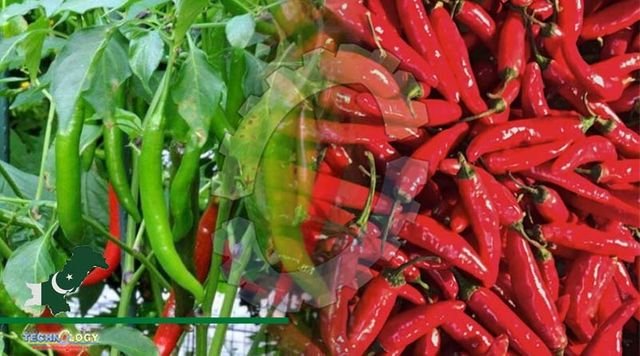China Machinery Engineering Corporation established a company and carried out a red chilli contract farming project in 2021, with Multan.

In keeping with the CPEC’s agricultural cooperation, China Machinery Engineering Corporation and Sichuan Litong Food Group established a company and carried out a red chilli contract farming project in 2021, with Multan serving as one of six model farms.
The China-Pakistan Economic Corridor (CPEC), which began in 2013, connects Pakistan’s Gwadar Port with Kashgar in northwest China’s Xinjiang Uygur Autonomous Region, focusing on energy, transportation, and industrial cooperation in the first phase and expanding to agriculture, livelihood, and other fields in the second phase.
Muhammad Sajjad was all smiles on a bright January morning after seeing thriving saplings of the Chinese red sweet chilli at a nursery in a remote farming land of Pakistan’s eastern city of Multan.
“These saplings are very close to my heart; in their blossom, I see the future of Pakistan’s agriculture industry, which, when modern Chinese technology is applied to it, will bloom just like my saplings,” Sajjad said as the morning sun rose from the east behind him.
Sajjad’s nursery is one of thousands of acres of model farms where the company has partnered with locals to contract farm Chinese chilli varieties with the goal of exporting the crops back to China after harvest and earning foreign exchange revenue for Pakistan.
Muhammad Adnan, the company’s executive manager, told Xinhua that local farmers are becoming more interested in cultivating Chinese chilli due to its higher yield and disease resistance.
“Local chilli is highly vulnerable to diseases, and farmers are hesitant to grow it, but the Chinese varieties are robust, easy to pick, and are sold at a higher price directly to Chinese companies from the farms without any involvement of middlemen, making it highly popular among local farmers,” he added.
According to Adnan, primary and deep processing units for value-added services of the crop will be established in Pakistan in the near future, adding more value and jobs for locals.
The crop’s most critical period is January, when the seedling process is underway in tunnels and the plants are easily rotten due to disease or low temperature. However, on the advice of Chinese experts, local agriculture technicians at the red chilli project are handling the sowing process.
In a conversation with Xinhua, Zhao Jianhua, a Chinese agronomist of the company with 27 years of experience in chili cultivation, said he has trained over 20 Pakistani agricultural technicians in the past years, who can help the farms independently.
“Not only are we bringing cultivation technology to local farmers, but we are also collaborating with Pakistani agronomists to promote the development of the chilli industry by combining technology with the advantages of both Chinese and Pakistani chilli varieties,” he added.
According to Muhammad Irfan Ahmad, the company’s assistant executive manager, many techniques such as nurturing the plants inside the tunnel, modern methods of transplantation, and providing adequate nutrients to the crops are some of the methods that local farmers did not adopt previously because they relied on primitive farming methods.
“With the help of Chinese agronomists, we teach people how to plant chilies and care for them scientifically,” he added.
According to Ahmad, the chillies usually yield around June. Still, due to early monsoon patterns in Pakistan, which began in June 2022, some of the plants were affected, so they will harvest the chilies in May this year to avoid the monsoon season.
In an interview with Xinhua, Muhammad Ejaz, a farmer who was preparing his land for transplantation in the coming days, said that they have high hopes for the project and believe it will bring socioeconomic prosperity to the region.
“The best thing about this crop is that it only takes six months to yield, as opposed to local chilli, which takes eight to ten months, so by planting Chinese chilli and following the experts’ guidance, we can now timely harvest the chilli and sow another crop following that to earn more money,” Ejaz said while looking at the lush chilli beds in the nursery.
Local experts and farmers believe that the red chilli project has a bright future as more and more farmers are getting interested in it, and it will gradually expand to other parts of the country due to increasing demand from farmers.